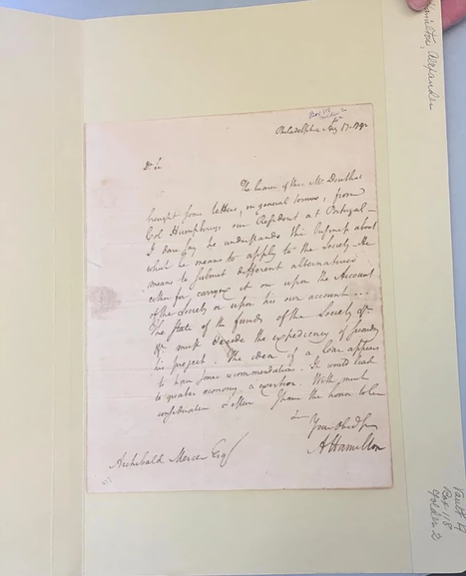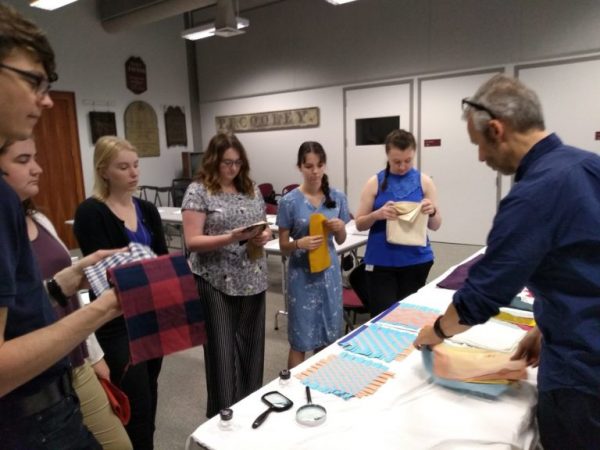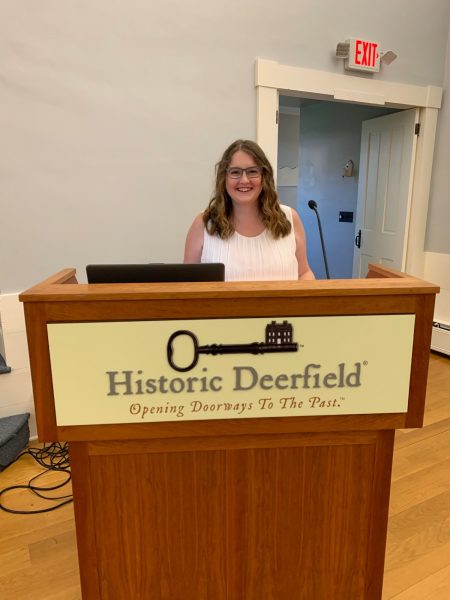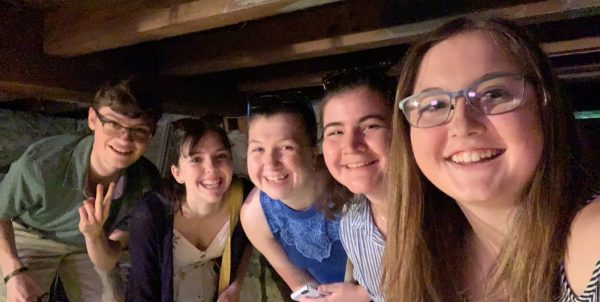Originally published in Source by Peyton Dailey

Holding an authentic letter written by the infamous Alexander Hamilton, standing in the hallowed halls of George Washington’s Mount Vernon estate, and sleeping under the roof of a traditional
federal-style house; this is the way to experience history hands-on, literally walking in the footsteps of our predecessors.
This is just a snippet of what the Deerfield Fellowship Program offers only six students nationwide each summer during a nine-week program. Just ask alumna Natalie Cozart (’19, History) who participated in this program last summer. Although the Deerfield Fellowship Program gave Cozart the opportunity to explore historic material culture, her interest in history extends far beyond this sub-field.
Connections are important in understanding history and seeing how the past influences the present. These temporal connections capture Cozart’s interest in the more analytical side of history. “[I’ve seen] how our country and our world today has been affected by people or events of the past and I was just more interested in finding out more of those deeper answers,” said Cozart.
Aptitude for history

Cozart’s unwavering curiosity about history solidified in high school. “I loved history before coming into college,” said Cozart. “It was mostly my high school teachers that really made me realize
that.” Cozart’s aptitude for fact retention helped her thrive in history with the endless memorization that it demands. Although memorization is just one component of history, it helped Cozart to explore the greater application of history and cultivate her critical analysis skills, finding connections within her research and learning how to articulate her knowledge in comprehensive writing tasks.
Not only did Cozart major in history, she had a second major in international studies and minored in French and political science. The flexibility to pursue more than one passion attracted Cozart to the College of Liberal Arts. With the overlap in credits between her degrees, she was able to personalize her undergraduate experience in order to pursue several of her interests. “I loved that everything that I studied here [CSU] are really big passions of mine.”
Deerfield Fellowship Program

Deerfield Fellowship Program is not your average summer program; only six undergraduate junior and senior level students from the entire United States are invited to participate each year. The application requirements include two reference letters, an essay, transcripts and high-level experience with material culture, artifacts and architecture preserved to reflect history in a tangible form.
Cozart applied for the program for the first time during her junior year but did not get accepted. She attributes this to her lack of direct experience at the time. However, when she applied for the second time during her senior year, her confidence and her experience both had grown.
After being rejected from the program the first time, Cozart decided to be proactive and expand her experience with material culture. Cozart completed the requirements of her capstone course through a semester-long independent study with CSU History Professor Ann Little, an option that allowed her to focus and cultivate her passion for artifacts and architecture. Cozart knew this improved her prospects of acceptance into the program and her independent study in material culture provided the edge she needed to be accepted.
The program itself proved to be an unparalleled experience for Cozart. She and the other participants researched, visited historical sites, and examined historical artifacts for 8-10 hours every day including weekends. Each participant chose a different research topic to guide their research throughout the program. “It was more difficult than I expected,” said Cozart. “It was like you’re just completely immersed in history and learning which was really cool and very beneficial into giving me and idea of what a career could be like.”

Flexibility for the future
Now, Cozart is applying to jobs based on the East Coast, specifically Washington D.C. “I want to see if I see myself doing, at this point in my life, something more history related or something more international studies related,” Cozart said. This summer, the Deerfield Fellowship Program was the experience of a history career for Cozart. “We ate, slept, breathed history,” Cozart said. “It was like graduate school in 9 weeks.”
Originally, Cozart believed the common fallacy that there are only two career paths a history degree yields: teaching and museum work. Now, after successfully completing both her undergraduate degrees and the Deerfield Fellowship Program, she knows this is not the case. “You don’t have to go into one stereotypical job,” Cozart said. “I like the flexibility that I will get to have in the future. I don’t foresee myself sticking to one job for the rest of my life.”